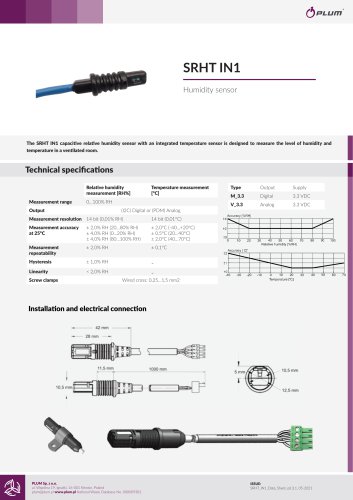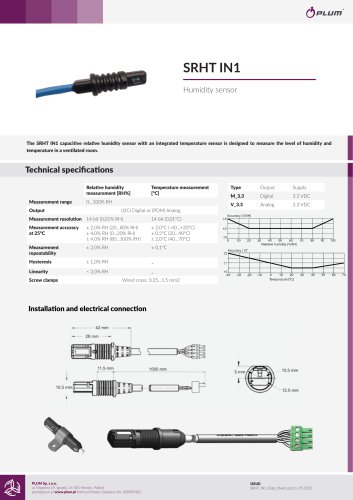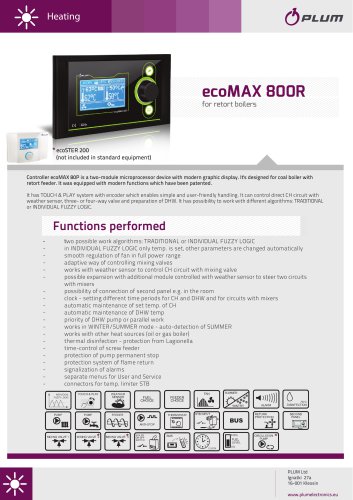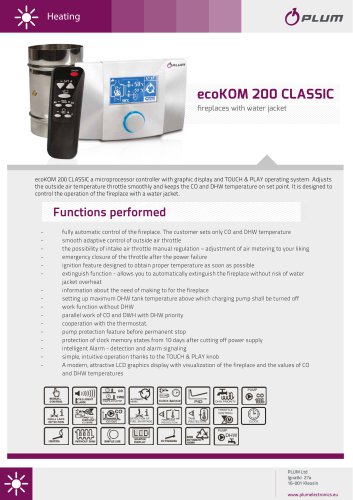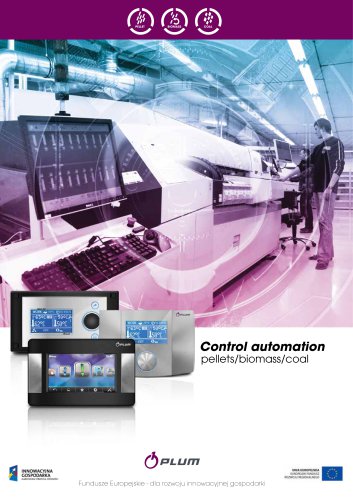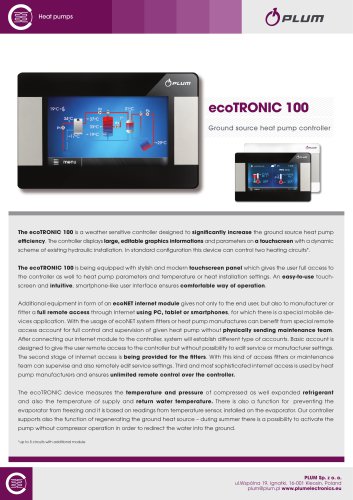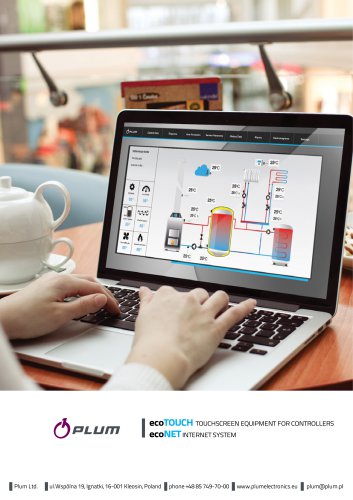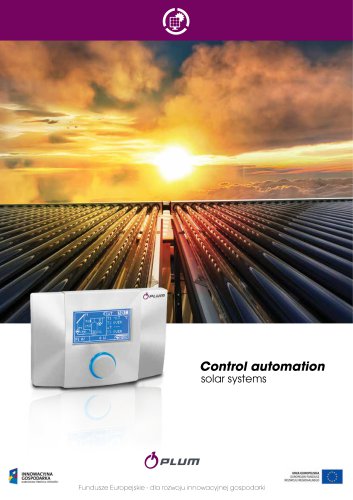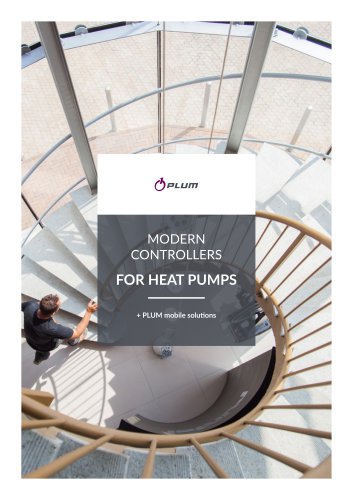
Catalog excerpts
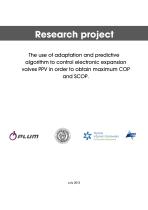
Research project algorithm to control electronic expansion valves PPV in order to obtain maximum COP
Open the catalog to page 1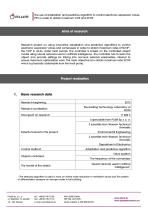
The use of adaptation and predictive algorithm to control electronic expansion valves PPV in order to obtain maximum COP and SCOP. Research project on using innovative adaptation and predictive algorithms to control electronic expansion valves and compressor in order to obtain maximum rates of SCOP , the COP in air-to- water heat pumps. The controller is based on the controlled object model using neural networks used in artificial intelligence. The controller has to learn the object and provide settings for taking into account external parameters, internal to ensure maximum optimization...
Open the catalog to page 2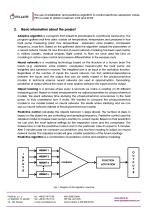
The use of adaptation and predictive algorithm to control electronic expansion valves PPV in order to obtain maximum COP and SCOP. 2. Basic information about the project Adaptive algorithm is a program that adjusts its parameters to a particular heat pump. The program gathers real time data: outside air temperature, temperature and pressures in four heat pump measuring point, flow temperature, expansion valve position, compressor frequency, mass flow. Based on the gathered data the algorithm adapts the parameters of a neural network model. Till now this kind of neural network modeling has...
Open the catalog to page 3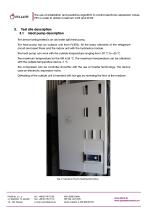
The use of adaptation and predictive algorithm to control electronic expansion valves PPV in order to obtain maximum COP and SCOP. 3. Test site description 3.1 Heat pump description The device being tested is an air/water split heat pump. The heat pump has an outdoor unit from FUJITSU. All the basic elements of the refrigerant circuit are based there and the indoor unit with the hydraulics module. The heat pump can work with the outside temperature ranging from -20 °C to +35 °C. The maximum temperature for the HW is 55 °C. The maximum temperature can be obtained with the outside temperature...
Open the catalog to page 4
The use of adaptation and predictive algorithm to control electronic expansion valves PPV in order to obtain maximum COP and SCOP. 3.2 Indoor unit description (hydraulics module) The indoor unit holds the condenser (part of the refrigerant circuit), and the elements of the hydraulics module that connect the heat pump with the heating system including: circulation pump, expansion vessel and safety valve. 2 - Regulator / User interface A - Heating circulation pump. 7 - Liquid refrigeration connection. Side view Fig. 3. Drawing of the indoor unit (hydraulics module). (14) O Class A circulating...
Open the catalog to page 5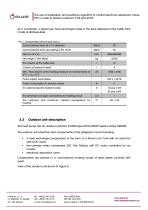
The use of adaptation and predictive algorithm to control electronic expansion valves PPV in order to obtain maximum COP and SCOP. As a condenser, a spiral type heat exchanger tubes in the tube disposed in the buffer tank made of stainless steel. Tab. 1. Characteristics of the indoor unit (1) 3.3 Outdoor unit description The heat pump has an outdoor unit from FUJITSU type WOYA100LDT serial number T000396. The outdoor unit holds the main components of the refrigerant circuit including: • a heat exchanger (evaporator) in the form of a finned coil Cu-AI with an axial fan • two-cylinder rotary...
Open the catalog to page 6
The use of adaptation and predictive algorithm to control electronic expansion valves PPV in order to obtain maximum COP and SCOP. In the circulation there are additional objects: • liquid refrigerant accumulator (reservoir) in the suction line (before the • filters below and above the expansion valve • temperature and pressure sensors 16-001 Kleosin e-mail: plum@plum.pl share capital: 2 355 800,00 PLN
Open the catalog to page 7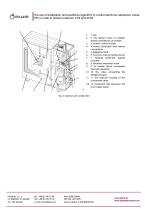
The use of adaptation and predictive algorithm to control electronic expansion valves PPV in order to obtain maximum COP and SCOP. 2. 2. The electric motor of variable speed controlled by an inverter 3. 3. Inverter control module 4. 4. Power connection and internal 6. 6. Four-way valve (inverting circuit) 7. 7. Housing protected against 8. 8. Electronic expansion valve 9. 9. An inverter driven compressor thermally insulated refrigerant pipes condensate drain 12. 12. Evaporator with aluminum fins Fig. 6. Outdoor unit construction 16-001 Kleosin e-mail: plum@plum.pl share capital: 2 355...
Open the catalog to page 8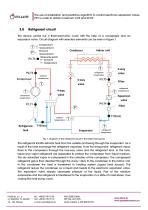
The use of adaptation and predictive algorithm to control electronic expansion valves PPV in order to obtain maximum COP and SCOP. The device carries out a thermodynamic cycle with the help of a compressor and an expansion valve. Circuit diagram with selected elements can be seen in Figure 7. Measuring point: Indoor unit Fig. 7. Diagram of the refrigerant circuit in the tested heat pump The refrigerant R-410A extracts heat from the outside air flowing through the evaporator. As a result of the heat exchange the refrigerant vaporizes. From the evaporator, refrigerant vapor flows to the...
Open the catalog to page 9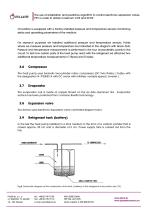
The use of adaptation and predictive algorithm to control electronic expansion valves PPV in order to obtain maximum COP and SCOP. Circulation is equipped with a factory-installed pressure and temperature sensors monitoring status and operating parameters of the medium. For research purposes we installed additional pressure and temperature sensors. Points where we measure pressure and temperature are indicated in the diagram with black dots. Pressure and temperature measurement is performed in the four characteristic points in the circuit. To test how certain parts of the heat pump react...
Open the catalog to page 10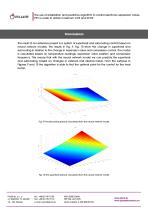
The use of adaptation and predictive algorithm to control electronic expansion valves PPV in order to obtain maximum COP and SCOP. The result of our extensive project is a system of superheat and subcooling control based on neural network models. The results in Fig. 9, Fig. 10 show the change in superheat and subcooling in relation to the change in expansion valve and compressor control. The model is calculated based on temperature readings, expansion valve position and compressor frequency. This means that with the neural network model we can predicts the superheat and subcooling, based on...
Open the catalog to page 11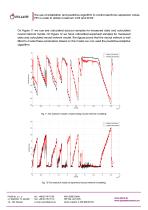
The use of adaptation and predictive algorithm to control electronic expansion valves PPV in order to obtain maximum COP and SCOP. On Figure 11 we can see calculated subcool samples for measured data and calculated neural network model. On Figure 12 we have calculated superheat samples for measured data and calculated neural network model. The figures prove that the neural network is well fitted to model these parameters. Based on this model we can used the predictive-adaptive Fig. 11 The research results of subcooling neural network modeling. Fig. 12 The research results of superheat...
Open the catalog to page 12All PLUM Sp. z o.o. catalogs and technical brochures
-
SCP V
2 Pages
-
SVOC EX1
1 Pages
-
SRHT IN1
1 Pages
-
ecoPRESS EX1-01
2 Pages
-
ecoPRESS EX1-02
2 Pages
-
MacBAT 5
4 Pages
-
ecoVENT
4 Pages
-
ecoVALVETRONIC
2 Pages
-
ecoSTER 200
2 Pages
-
eSTER_x40
2 Pages
-
ecoMAX 800R
2 Pages
-
ecoKOM 200 Classic
2 Pages
-
850i v12
4 Pages
-
ecoMAX 200D
2 Pages
-
Pellets_Biomass_Coal
32 Pages
-
ecoMAX_800P
2 Pages
-
ecoTOUCH 800P
6 Pages
-
ecoNET 300
4 Pages
-
Solar systems
16 Pages
-
Fireplaces
20 Pages
-
Wood gasification
4 Pages
-
Pellet
6 Pages
-
Folder heat pumps
4 Pages



